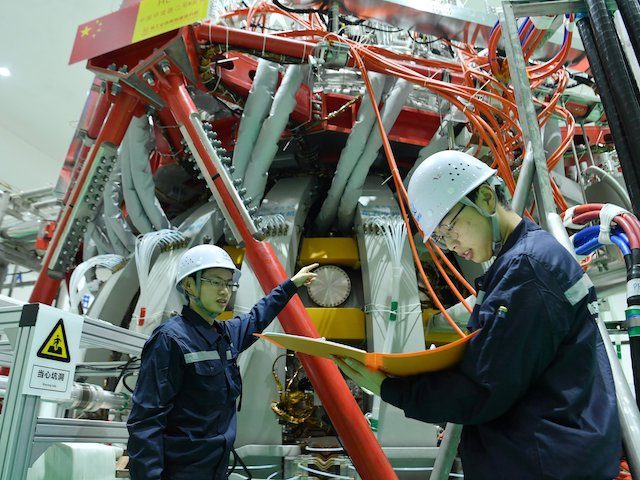The Chinese government announced on Wednesday that five of the fuel rods in the No.1 reactor at the Taishan nuclear power plant have broken, increasing radiation levels and releasing gases inside the reactor.
Beijing insisted that the situation allegedly poses no threat to the outside world.
It was the first official acknowledgment of a significant problem at Taishan since the French co-owner of the plant wrote a troubling letter to the U.S. government last week, warning of an “imminent radiological threat.”
China’s Ministry of the Environment and Nuclear Safety Authority issued a joint statement on Wednesday that said “about five” of the 60,000 fuel rods inside the reactor have become “damaged.”
The statement claimed the reactor is operating “within regulatory parameters” and “there is no leakage” of radioactive material into the environment. Chinese officials said the damaged rods amount to roughly 0.01 percent of the reactor’s total fuel, while its design allows for up to 0.25 percent of the rods to be damaged. The Ministry of the Environment said the reactor’s safety systems were functioning as planned.
China’s state-run Global Times insisted this much-delayed admission of the problems at Taishan “refuted” CNN’s report about the French company, Framatome, sending a warning letter to the U.S. Department of Energy last week.
Chinese Nuclear Safety Administration officials denied they were considering increasing the minimum safe threshold for radiation in the area so they could avoid shutting the plant down, as suggested by various observers this week.
The Global Times also heaped scorn upon Japanese government officials for their “absurd” concern that China might be concealing a serious problem at Taishan, accusing the Japanese of “putting on sanctified airs” and throwing in a nasty crack about Tokyo’s “irresponsible decision in handling the nuclear wastewater at the Fukushima plant.”
Some nuclear experts were not entirely reassured by the Chinese statement, pointing out that minor damage to fuel rod coatings is not uncommon, but radioactive gas accumulating to noteworthy levels in the steam surrounding the rods is unusual.
“Official environmental monitoring data shows a slight increase in radiation near Taishan compared with other nuclear plants in China, but experts say this remains within the normal range of environmental radiation levels in Guangdong,” AFP reported on Wednesday, referring to the province near Hong Kong where the Taishan plant is located.
Reuters noted on Wednesday that China’s National Energy Administration introduced new quality guidelines for nuclear reactors last year, citing “quality problems” during the recent construction of reactors because “the equipment procurement process focused too much on minimizing costs and the design process was often inadequate.”
None of China’s 50 reactors was specifically named in this bulletin. The Taishan power plant was completed in 2019.

COMMENTS
Please let us know if you're having issues with commenting.